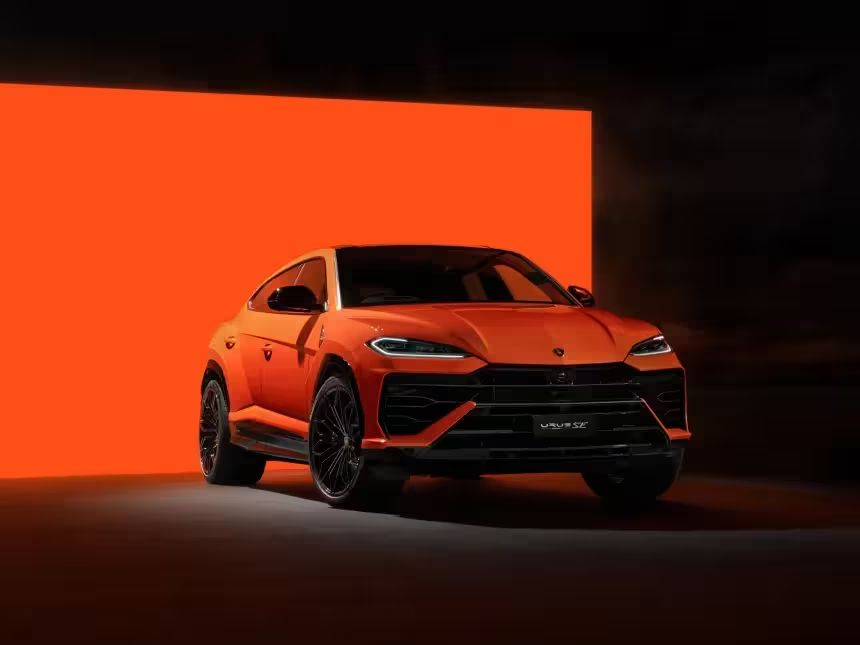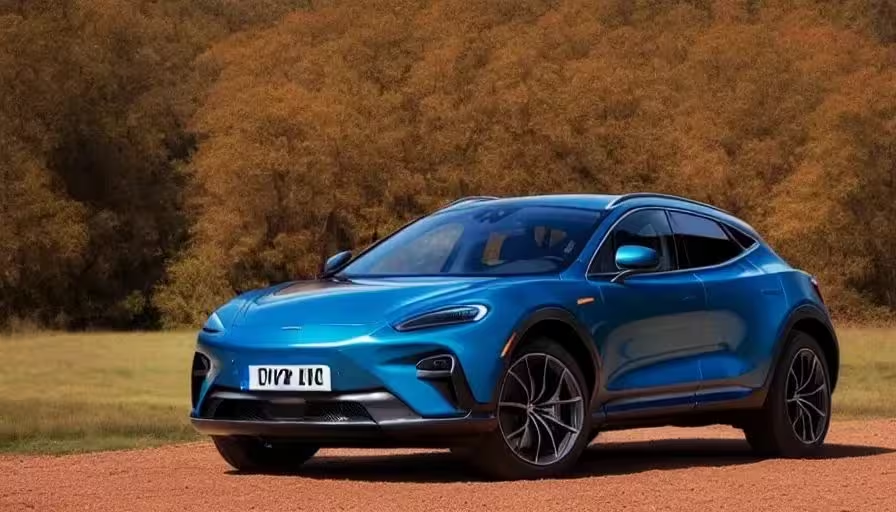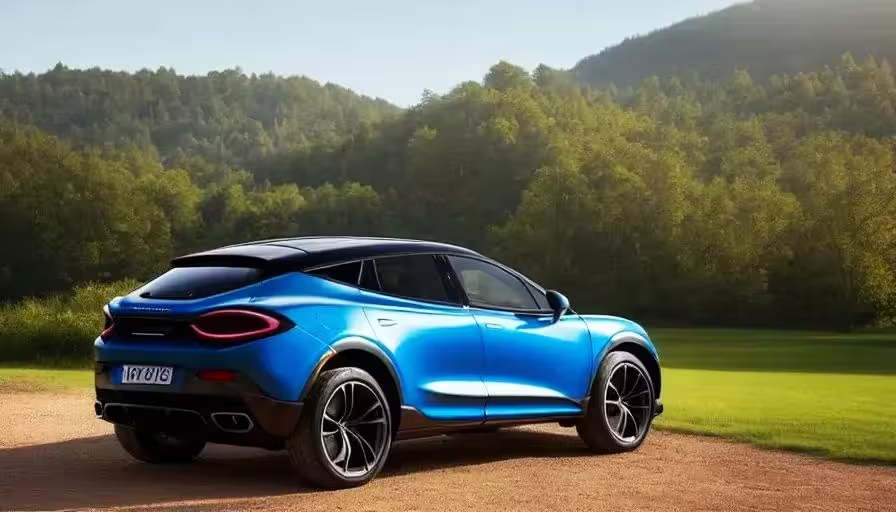8 Minutes
McLaren's P47 clay model emerges: the SUV nobody expected
At a recent dealer meeting in the UK, McLaren quietly revealed a clay model of its long-rumored SUV, codenamed P47. The sketch-like model and a handful of details have set the automotive world talking: this is not a concept sketch but a tangible preview of a production intent, reportedly slated for a 2028 launch. For a brand built on lightweight supercars and razor-sharp dynamics, an SUV is provocative — but history shows disruption often follows skepticism.
What we learned from the dealer preview
Guests at the presentation described a car that looks unmistakably McLaren yet scaled up: a split-headlight motif replacing the old inset projectors, an aerodynamic roof 'spine' that reads like a nod to F1 shark fins or sports prototypes, and a substantial rear wing and diffuser. The clay model reportedly sat on 24-inch wheels and carried muscular, sculpted proportions that some compared to the Porsche Cayenne Turbo GT in stance — albeit with unique McLaren proportions.

Under the surface, insiders say the P47 will follow McLaren tradition: a focus on lightweight materials, aerodynamic engineering, and a driver-centric layout. Rumors point to a V8 engine with hybrid assistance, mounted low and pushed rearwards to preserve balance and handling. Those details aren't official, but they fit McLaren's engineering DNA.
Timeline: W1, a new coupe, then the P47
McLaren's product roadmap is busy. The W1 hypercar is expected to begin deliveries in 2026. Between the W1 and the P47, a new coupe is reportedly due in 2027; dealers say the upcoming coupe will sit between the Artura and 750S and will echo design cues from older-generation McLarens. That mid-range coupe is rumored to cost in the low $300,000s, while the P47 will likely occupy a loftier price band.
This staged rollout — hypercar, retro-inspired coupe, then SUV — shows McLaren is balancing halo builders with volume-generating models. If the P47 can bring steady revenue without diluting brand performance, it will fund the wild projects McLaren is known for.

Design cues and engineering focus
Key design takeaways from the clay model and eyewitness accounts:
- Split headlight design without the inset projectors seen on previous McLarens.
- A pronounced roof spine, likely serving aerodynamic and cooling roles.
- Large rear wing and aggressive diffuser for high-speed stability.
- Muscular shoulders and large wheels (reportedly 24-inch) for presence.
McLaren's emphasis on aerodynamics and weight reduction suggests the P47 will target a rare niche: a true performance SUV that aims to drive like a sports car rather than behave like a bloated crossover.
Powertrain and performance expectations
While McLaren hasn’t released powertrain specs, the prevailing expectation is a hybrid-assisted V8. Mounting the engine low and far back will preserve the brand's handling priorities. Hybrid systems can boost torque, improve drivability in traffic, and help meet tightening emissions targets without sacrificing performance — a key advantage for a performance-luxury SUV entering a competitive segment.

Possible performance priorities for the P47:
- Low center of gravity and rear-biased weight distribution.
- Hybrid energy recuperation and torque fill for instant response.
- Active aerodynamics (wing and diffuser) to balance downforce and drag.
- Chassis tuning to deliver sharp steering and controlled body motions.
Expectations should be tempered: SUVs add mass, and McLaren’s challenge will be to preserve the visceral character of models like the 720S and Artura while delivering the comfort and utility buyers expect from a four-door.
Market positioning and rivals
McLaren is late to the performance-SUV party, but that may actually be an advantage. The brand can study the playbooks of rivals and apply lessons in hybrid tech, interior luxury, and customer expectations. Consider how Porsche turned criticism into cash with the Cayenne; how Lamborghini's Urus became its best seller; how Ferrari's Purosangue generated both outrage and profit; and how Bentley and Rolls-Royce broadened their appeal with the Bentayga and Cullinan.
Competitors and benchmarks the P47 will be measured against:
- Lamborghini Urus — a performance-first SUV with broad appeal.
- Ferrari Purosangue — a four-door supercar alternative.
- Porsche Cayenne Turbo GT — demonstrates how dynamics and usability coexist.
- Bentley Bentayga and Rolls-Royce Cullinan — for luxury benchmarks.
McLaren's advantage could lie in aerodynamics, lightweight construction, and the brand’s hypercar-derived engineering. But to win buyers, it must also deliver usable interior space, technology, and a compelling ownership experience.

Why purists complain — and why the market forgives
The reaction from purists is predictable. McLaren has cultivated a reputation for featherweight sports cars that feel razor-sharp. An SUV feels, at first glance, at odds with that philosophy. But history shows that initial outrage often recedes when machines perform. The Cayenne, Urus, and Bentayga all faced hostility early on; they went on to become critical revenue streams that funded the very sports cars that defined each marque.
For many buyers, the value proposition is simple: versatility plus brand cachet. Modern performance-luxury customers want to haul luggage, drive in all weather, and still enjoy a thrilling driving experience. The P47's success will hinge on whether McLaren can offer a true performance SUV — not simply an enlarged sports badge slapped onto an SUV chassis.
Strategic moves behind the scenes
McLaren's recent corporate changes explain some of the urgency. New ownership and the integration of a startup called Forseven — wrapped into McLaren’s operations — suggest the company is consolidating expertise in areas like electrification and niche engineering. CEO Nick Collins, who previously ran Forseven, has pushed back on assumptions that the startup was solely EV-focused, indicating a broader technology and product strategy.
McLaren has also consulted with Gordon Murray Automotive, whose recent limited-run hypercars echo the raw, driver-focused ethos that made McLaren famous. Such collaborations hint at a mix of heritage and innovation informing future models.
Key takeaways: what to watch
- Official confirmation of powertrain and weight targets will be crucial.
- Interior packaging and tech will determine mainstream appeal.
- Pricing and trim strategy will show whether McLaren wants the P47 to be a halo or a steady-seller.
- How McLaren balances comfort vs. dynamic purity will define reception among enthusiasts.
Final thoughts: can McLaren pull it off?
If McLaren executes the P47 as a credible performance SUV that preserves the brand’s core values — lightweight engineering, driver engagement, and aerodynamic efficiency — it can join the ranks of successful performance-luxury SUVs. The clay model is an early sign of intent rather than a finished product, but it’s enough to suggest McLaren is serious about expanding its lineup while protecting the engineering principles that built its reputation.
In many ways, McLaren's late arrival could be a strength. The company can learn from competitors, avoid early mistakes, and leverage hybrid systems and advanced aerodynamics to deliver a distinctive product. The big question is whether the P47 will convince purists and newcomers alike. If history offers any guidance, the initial backlash will likely fade once the first customers experience a McLaren SUV that truly drives like one.
Highlights:
- P47 clay model previewed at UK dealer meeting; production targeted for 2028.
- Design cues include split headlights, roof spine, large rear wing, and 24-inch wheels.
- Expected hybrid-assisted V8 with low, rearward mounting for dynamics.
- Positioned to compete with Urus, Purosangue, and high-performance Cayennes.
Whether the P47 becomes a revenue workhorse or an outlier in McLaren’s lineup depends on execution. Done right, it could fund the next generation of hypercars. Done poorly, it risks alienating the core fanbase. For now, enthusiasts will watch closely as McLaren blends tradition with an unmistakable appetite for growth.
Source: autoevolution
Comments
mechbyte
Whoa, McLaren SUV? Didn't see that coming… kinda excited and nervous. If they keep it light and sharp maybe they'll pull it off. But 24-inch wheels already scream SUV lol


Leave a Comment